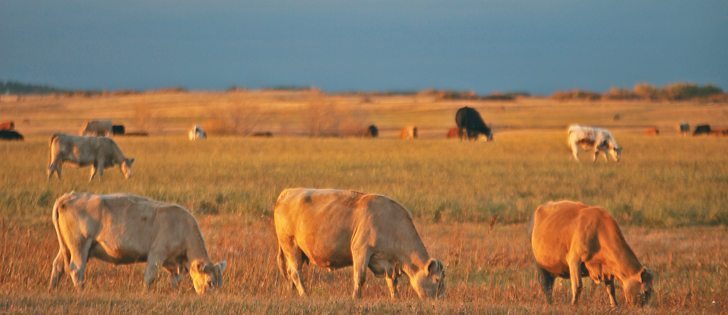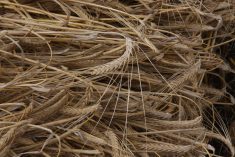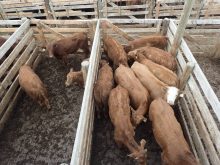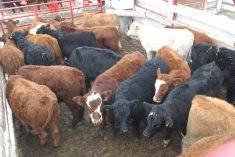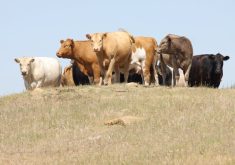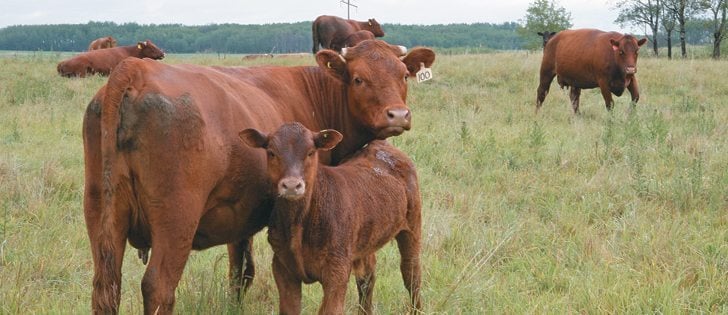Purebred cattle breeders supply the commercial market with bulls, but ranchers and feedlots operators say breeders should listen more to their needs.
Tom Fenwick manages Tongue Creek Ranch in the Alberta foothills. The 14,000-acre spread of mostly native grass is home to 700 commercial Angus cows with plans to grow to 850 cows using purebred Angus bulls.
Owned by Calgary businessperson Bill Siebens, the ranch demands cows that can wean calves every year. The ranch buys bulls from reputable southern Alberta breeders, as well as a few Saskatchewan producers. They raise their own heifer replacements.
Read Also

Exports off to a slow start after last year’s torrid pace
Canadian grain, oilseed and pulse exports are off to a slow start, but there are some bright spots, according to the Canadian Grain Commission’s most recent weekly export data report.
They have tried introducing new cattle to the southern foothills environment but these were less successful because they were not acclimatized.
“If they don’t come from the area they take two or three years to adapt,” Fenwick said.
“The cow has to be able to do it on her own at our place,” he said.
The breeding cycle is a short 49 days to select the most fertile females. Such a tight schedule produces more consistent calves in the fall.
Replacement heifers are fed extra grain in their first winter from the time they are weaned but the following spring they live on grass.
Cows are pregnancy checked and vaccinated in the fall. Typically, about three percent of cows are open and 10 to 12 percent of the heifers fail to get pregnant. Those with bad feet, udders or aggressive attitudes are removed. If they do not have a calf, they are culled.
Blood tests are also taken to provide the information to develop a custom made mineral mix for the cows.
Bulls must produce low birthweight calves because cows are expected to calve unassisted. When buying bulls, the expected progeny differences are checked for birthweight, weaning weights and marbling potential.
The bulls must be physically sound to walk well across the range in pastures 300-3,000 acres in size.
Calves are born in April and each is tagged with a number to monitor the mothers and the offsprings’ progress. No implants are used but the calves are on a full vaccination program from Zoetis.
DNA is used to match calves to their sires, particularly if one is producing heavy weight calves. That bull will not continue in the program.
Steers are shipped at 500-600 pounds and heifers go at around 500 pounds.
The company has started marketing through satellite sales so it could pick the delivery time. They can sort the cattle into more uniform groups with less stress.
“We load up 250 to 300 identical calves and it is really nice to watch them go down the road,” he said.
Feedlot managers do more than watch the markets every day; they also monitor cattle for health and gain.
“We have to make a profit on these cattle or at least have a potential of profit to be in business,” said Scott Brady of Highway 21 Feeders east of Calgary.
Owned by Ed and Linda Miller, Highway 21 Feeders is a large, family-owned agribusiness that includes a 20,000 head lot, grain and cattle hauling division and 17,000 acre grain farm.
Brady manages the 8,500 cow-calf unit for the company.
The company offers retained ownership and other partnership arrangements.
Healthy animals make money so this company prefers to see calves pre-vaccinated. Many producers provide an eight-way product but as feedlot calves they should also have added protection against respiratory diseases like bovine viral disease and infectious bovine rhinotracheities.
The company tends to buy direct from ranchers. Once the animals are at the feedlot, their average daily gain is monitored. If a particular producer’s cattle did well, they will buy from him again.
They buy a lot of Angus cattle but there is variation in genetics and differences in feed conversion and weight gain.
There may be a $400 per head spread between the best and the worst. They also want to know how the carcasses graded. Genetics can help determine whether cattle grade A or Prime resulting in premiums and discounts.
“A $200 spread can easily be obtained through the best and the worst,” he said.
“Consistency comes from genetics and that is why we are involved in scanning and tracking to find where good genetics are and where the bad genetics are,” he said.
Every calf coming from their cowherd will be parentage verified back to the sire to build more consistency among the bulls used. They will be artificially inseminating about 4,500-5,000 females this year.
They plan to track the resulting calves from the pasture to the carcass to build a data program to assess what needs to be changed to improve their cattle.
This approach costs money but the plan is to offset that with heavier and better grading carcasses.
Working with Heartland Order Buying, Rick Wright sees a wide cross section of operations across the country. He also sees some trends.
He buys cattle mainly in Manitoba and eastern Saskatchewan for feedlots and grass operations across Canada and the United States.
There is renewed optimism with a strong demand for Black and Red Angus, and commercial producers have relished the best market conditions of their lives.
“We have new optimism in the cattle business. Producers are happy and it has created confidence, which was reflected in your bulls sales this spring,” he said at the Angus convention.
“On the feeder cattle market we have probably seen the tops of the market in this spring and this summer,” he said.
Fall contracts on 600 pound calves are $3-$3.5 a pound, up from $2.85 in the fall of 2014. Finished cattle could remain strong for the next 18 months due to the 80 cent dollar and lower feed grain values.
“We are in for a good time for the next five years as long as the dollar doesn’t go above par or we have drought,” he said.
The good times may continue to roll but he worries about the sus- tainability of the business in this country.
Canada shipped 441,000 feeders to the United States last year and this year it could be higher. If the U.S. country-of-origin labelling dispute is resolved, Canadian feeder cattle will be even more attractive to American buyers anxious to fill feedlot pens.
U.S. COOL labels make Canadian meat more expensive for American packers to process and so is often not bought by U.S. processors. Canada has won four rulings against COOL as an unfair trading practice at the World Trade Organization and the U.S. now faces retaliatory tariffs unless it repeals the law.
The U.S. appears to be rebuilding its cow herd but it will be at least 18 months before there are extra cattle to ease the supply problems.
Canada is not expanding its herd and producers are not buying more land or equipment. In fact, more producers are retiring because they have decided to leave while prices are high so Wright predicts more dispersals.
Further, financing is hard to come by for expensive bred females. If the bank offers $2,000 per female, a producer has to come up with at least another $1,000 at today’s prices.
And, if this summer stays dry across Western Canada, potential replacements could get shipped to the U.S.
Fewer cattle put the feedlots and packers in jeopardy.
“We cannot allow the infrastructure to disintegrate and disappear. If we do that we will be fully dependent on the south for our markets,” he said.




